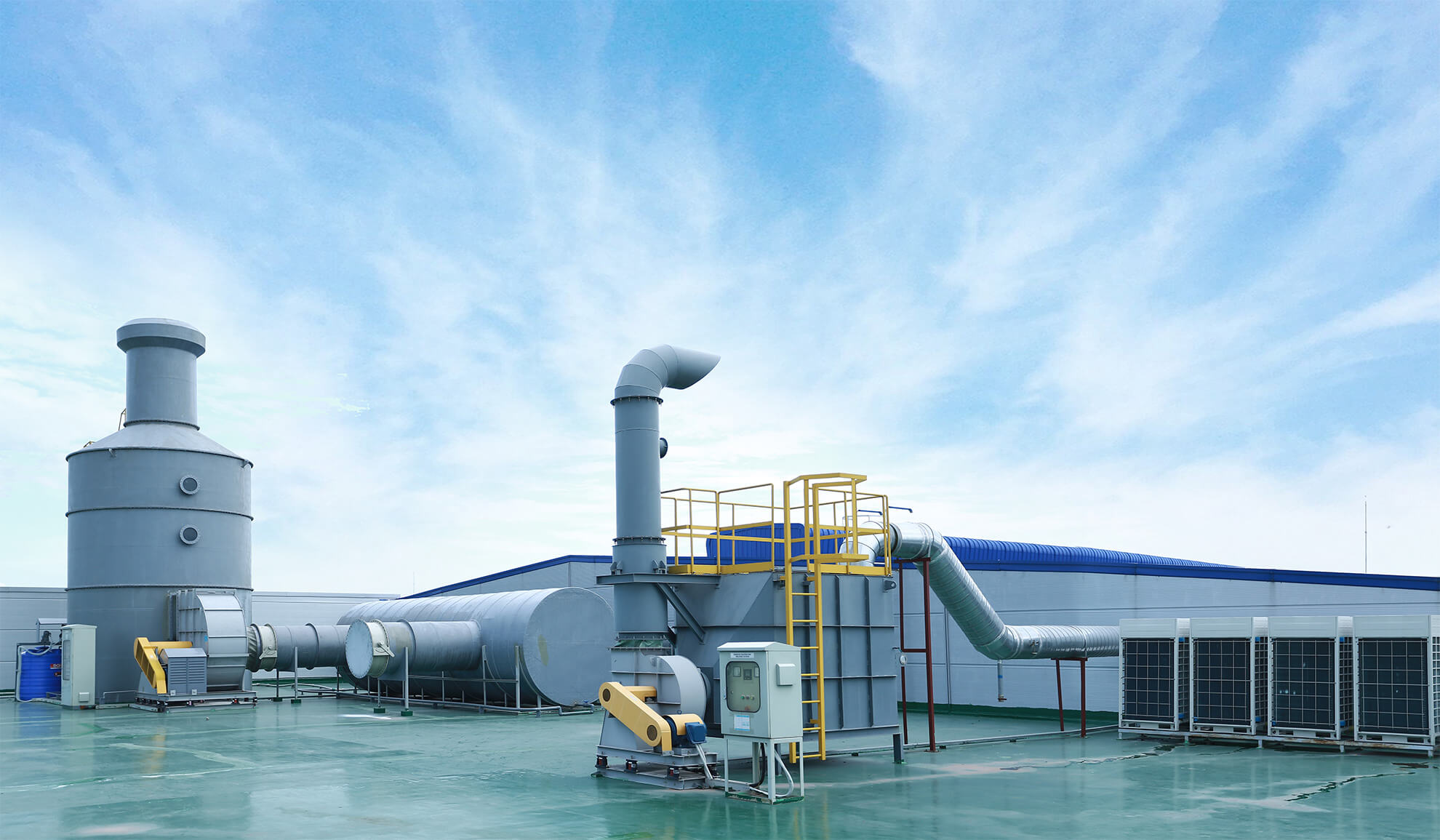EMISSION TREATMENT
Reduction of emissions and better use of byproducts
The environmental projects aim to reduce emissions to the internal and external environment, and to utilize the byproducts from the production processes.
Chemical gas scrubbers (crossflow scrubbers and counterflow scrubbers) for the separation of H2S (hydrogen sulfide), NH3 (ammonia), HCl (hydrochloric acid),SO2 (sulfur dioxide), RHS (mercaptans or thiols), CH2O (formaldehyde, formaline), amines, phenol, HNO3 (nitric acid), NOx (nitrogen oxide), EO (ethylene oxide), …
Gas scrubbers for volatile organic compound abatement
A gas scrubber installation is one of the most used technologies for air pollution control (separation of hazardous or toxic components) and odour control (separation of odor components in case of odour nuisance) out of industrial emissions. A gas scrubber is used to bring the gas emissions or off-gases to be treated, in contact with a washing liquid (water with most of the time chemical additives), to separate components from the gas and absorb them into the liquid. In order to maximize the contact surface, tower packing is used to increase the performance of the scrubber. Synonyms for gas scrubbers are absorbers, wet scrubbers and industrial air scrubbers. Gas scrubbing is one of the most used technologies in the field of emission treatment and air pollution, as the gas scrubbing technology can be applied for the largest range of gas emissions (from all kinds of industries) to treat. Gas scrubbers can be used for separation of hazardous or toxic air components (air pollution control) as well as for separation of odour components (odour control/odour abatement).
